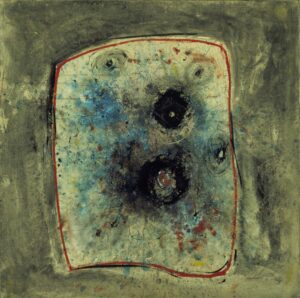 Intuition vs. Trauma
Intuition vs. Trauma
One of the most common questions that I get as a trauma therapist is “How do you deal with all the crazy people that believe (insert X here) about politics, religion and conspiracy theories. It’s a fair question because I work by connecting patients back to their empowered intution and teaching them to tell the difference between it and their own unconcious trauma and the avvoidance and biases itt creates. People are often shockesd to hear that I dont treat any patients any differently. Someone’s treatment who believes all that crazy (insert X) stuff you asked about looks a lot like the treatment that you just did. We all have an authentic self and a powerfull intution that goes along with clearing traauma and restoring the connection to it. While the traumas that we bring into therapy often look quite different the center of the soul doesnt look that different.
Intuition is a powerful yet elusive human capacity, often described as a “gut feeling” that guides decision-making and perception. Carl Jung saw intuition as one of the four fundamental psychological functions, alongside thinking, feeling, and sensation. In contrast, psychological trauma can profoundly alter an individual’s cognition, emotion, and behavior, often in ways that are not immediately apparent to the conscious mind.
Intriguingly, recent neuroscientific research suggests that both intuition and trauma response may originate from the same primitive brain structures, particularly the brainstem. This neurobiological overlap has significant implications for understanding how trauma can masquerade as intuition, misleading individuals in their beliefs, behaviors, and even political inclinations.
The Neurobiology of Intuition
Intuition is often experienced as a rapid, non-conscious form of information processing that precedes and guides more deliberate, analytical thinking. Neuroimaging studies have linked intuitive judgments to activation in brain regions including the orbitofrontal cortex (OFC), anterior insula, anterior cingulate cortex (ACC), and basal ganglia. These areas are involved in integrating sensory, affective, and bodily information to generate rapid, “gist-level” assessments of a situation.
Crucially, intuition seems to rely heavily on signals originating from the body’s internal state (interoception), conveyed via pathways from the brainstem to higher cortical regions like the insula and ACC. This “bottom-up” flow of information allows intuition to guide behavior before conscious awareness kicks in. As depth psychologist James Hillman noted, “The unconscious comes to us as feelings, symptoms, and intuitions – the stuff of psyche or soul.”
Many artists, athletes, and professionals who require complex pattern recognition and rapid decision-making under uncertainty have learned to cultivate and trust their intuition. They can sense patterns and act on them before consciously grasping the full picture. As physicist and philosopher Michael Polanyi described it, “We can know more than we can tell.”
The Neurobiology of Trauma
Like intuition, the body’s response to trauma is rapid, automatic, and largely mediated by subcortical brain regions, particularly the brainstem and limbic system. During a traumatic event, the brainstem initiates a cascade of physiological changes (e.g., increased heart rate, release of stress hormones) to mobilize survival responses like fight, flight, or freeze.
These trauma-induced alterations can persist long after the actual threat has passed, leading to chronic hyperarousal, hypersensitivity to potential threats, and dysregulation of stress response systems. Neuroimaging studies of post-traumatic stress disorder (PTSD) consistently reveal hyperactivity in limbic regions like the amygdala and insula, coupled with decreased top-down control from prefrontal areas like the medial PFC.
Critically, the bodily sensations and autonomic responses triggered by trauma can become dissociated from the original context and resurface as inexplicable “gut reactions” in response to trauma reminders or stressors. These somatic markers of past trauma can hijack the intuitive processing pathways, flooding the system with survival-oriented signals disconnected from present reality. As psychiatrist Bessel van der Kolk explains, “the body keeps the score.”
Mistaking Trauma for Intuition
Given their shared neurobiological origins in the brainstem and reliance on bodily signals, it’s not surprising that the residue of trauma can be easily mistaken for genuine intuition. Trauma survivors may find themselves “intuiting” danger, mistrust, or aversion in situations that are objectively safe, driven by the subcortical echoes of past wounds.
This confusion between trauma and intuition can lead individuals to make decisions, form beliefs, and interpret experiences in ways that are colored by their unresolved psychological injuries. Traumatic experiences in childhood, for instance, can distort perceptions of relationships, leading to “gut feelings” of mistrust or expectation of abandonment that are more reflective of the past than attuned to present realities. Research has shown how early attachment wounds can impact the development of healthy intuition.
Unmetabolized trauma can profoundly skew political and religious beliefs, causing individuals to adopt ideological positions that are driven more by unconscious emotional reflexes than conscious values. The “Shadow” and “Golden Shadow” concepts in Jungian psychology shed light on how unowned aspects of the psyche, including traumatic wounds, can be projected onto the political and religious landscape.
On the right wing of the political spectrum, unresolved traumas around vulnerability and powerlessness can lead individuals to adopt hardline stances that emphasize strength, dominance, and in-group loyalty. Those who learn to deny their own weakness and vulnerability may become emotionally reactive, projecting their shadow onto outgroups and aligning with belief systems that justify the suffering of those perceived as different or inferior.
In the religious sphere, this might manifest as an adherence to fundamentalist doctrines that stress divine judgment, sin, and punishment. The fear of one’s own hidden vulnerabilities is managed by projecting it onto a wrathful God and a fallen world. Sexuality, in particular, often becomes a locus of shadow projection, with conservative religious views on sex serving to disown and control unintegrated erotic wounds.
On the left end of the spectrum, unmetabolized trauma can lead to an overidentification with victimhood and an excessive reliance on external systems for healing and redemption. Those who have not yet found the inner resources to confront their own wounds may project their need for healing onto sociopolitical causes or utopian visions of collective transformation.
In the religious and spiritual domain, this might take the form of beliefs that promise transcendence without the hard work of embodied integration, or theologies that sidestep the shadow by idealizing the marginalized. While the surface expressions differ, both right and left can fall into the trap of using politics and religion to bypass the confrontation with one’s own buried traumas.
Unresolved trauma can manifest in polarized political ideologies that serve to reinforce, rather than heal, psychological wounds. On the right, a denial of personal vulnerability can lead to a worldview that idealizes strength, attacks perceived weakness, and justifies the status quo. Unmetabolized wounds, especially those related to powerlessness and insecurity, are projected onto a social order that is seen as both necessary and natural.
On the left, an overidentification with victimhood can result in a politics of blame that locates the source of all suffering in external structures of oppression. The individual’s own unintegrated trauma is bypassed in favor of a fixation on systemic change, often tinged with utopian fantasy. The hard work of personal healing is outsourced to the collective, with the revolutionary upheaval serving as a stand-in for the inner confrontation with shadow.
In both cases, political ideology functions as a defense against the direct experience of one’s own wounds. It offers a way to make sense of personal pain by projecting it onto the world stage, casting it in terms of grand narratives of good versus evil, oppressed versus oppressor. While the content differs, the underlying psychological process is similar – a flight from the shadow into the false certainties of ideological purity.
The Jungian concepts of the Shadow and the Golden Shadow can help us understand these dynamics. The Shadow represents the repressed, denied aspects of the psyche that we project onto others, while the Golden Shadow represents the positive qualities we fail to recognize in ourselves and instead idealize in external figures or movements. In the political realm, unintegrated shadow material can manifest as a demonization of the opposition, while unrecognized golden shadow qualities can be projected onto idealized leaders or utopian visions.
The real work of political maturation, then, involves a turning inward – a willingness to face the traumas that have been denied and transmuted into political reactivity. It requires a suspension of the easy answers of ideology in favor of the harder path of self-inquiry. This is the essence of shadow work – the practice of courageously encountering the repressed aspects of the psyche and taking responsibility for their integration.
As we metabolize our own wounds and reclaim our projections, we gradually disentangle our authentic political convictions from our unresolved psychological issues. We become able to hold complexity, to tolerate disagreement, to empathize with difference. Our political engagement becomes less about defeating an enemy or saving the world, and more about contributing to a gradual healing of the whole.
This inner work is supported by practices like depth psychotherapy, contemplative introspection, and embodied spirituality. These disciplines provide containers in which we can safely explore our shadows and allow them to transform us. They help us to develop the emotional literacy and integrative capacity necessary for a more mature political discourse.
Ultimately, the path to a healed polity runs through the individual psyche. As we each do the difficult work of confronting our own trauma and reclaiming our projections, we collectively create the conditions for a politics of wholeness – one that honors the full spectrum of human experience and seeks not conquest, but reconciliation. In this way, the political becomes deeply personal, and the personal becomes authentically political.
Likewise, misogynistic attitudes can arise from a fearful “gut response” to the power of the feminine, rooted in early relational injuries. When trauma shapes and subverts intuition in this way, the resulting beliefs and behaviors often serve to reinforce and perpetuate the original wounds rather than heal them. Political scientists are increasingly recognizing the role that personal and collective trauma plays in shaping ideology.
Cultivating Discernment
Distinguishing true intuition from the somatic flashbacks of trauma requires a commitment to self-awareness and self-compassion. It involves learning to pause and examine the “felt sense” of our gut responses – to sense whether they are attuned to the present moment or are echoes of our unhealed past.
Practices like mindfulness meditation, Focusing, and various forms of depth psychotherapy can help cultivate the capacity to witness and work with the somatic residue of trauma skillfully. By befriending the body and learning its language, we can start to discern the vital messages of intuition from the vestigial cries of our wounds. Research has shown the efficacy of body-oriented therapies like Somatic Experiencing in healing trauma and recalibrating intuition.
This is delicate, lifelong work, as the complexes engendered by trauma often operate unconsciously. Carl Jung, Sigmund Freud, Pierre Janet and many other pioneers of depth psychology recognized the power of the unconscious to shape our perceptions and behaviors in ways that are hidden from the ego. Bringing this shadow material into conscious awareness is an essential part of the healing journey.
At a collective level, understanding how personal and intergenerational trauma can distort our intuitive capacities may foster more compassion in political and cultural discourse. Recognizing the “traumatic distortions” in our own belief systems and those of others is a necessary step towards a more healed polity. In Jungian terms, it is a confrontation with the collective shadow. Social psychologists like Carl Jung and Abraham Maslow emphasized how unintegrated personal struggles manifest in sociopolitical beliefs and actions.
How to Check Your Trauma
The emerging neuroscience of intuition and trauma reveals that these seemingly distinct human experiences share common origins in the subcortical structures of the brain. This overlap explains why the unhealed wounds of trauma can masquerade as intuition, leading us to thoughts, feelings, and beliefs that are driven more by the past than the present.
Disentangling trauma from true intuition is a subtle, introspective process that requires patience, discernment, and self-honesty. It involves learning to listen to the body’s signals with curiosity and care, and to sense when our “gut reactions” are attuned to current reality versus when they are distorted by the scars of our past.
By doing this work of self-examination and self-integration, we can begin to free our intuitive capacities from the shackles of our wounds. We can learn to trust the wisdom of our inner knowing while also approaching it with humility and discernment. In this way, intuition can become an ally on the journey of healing – a compass needle pointing us towards wholeness, individually and collectively.
Table: Neural Correlates Comparison: Trauma Response vs. Intuition
| Neural Substrate | Involvement in Trauma Response (PTSD) | Involvement in Intuition / Insight | Evidence Type | Nature of Overlap / Interaction Potential |
| Insula | Hyperactivation to threat/trauma cues; interoceptive dysregulation; SN node; linked to re-experiencing, arousal 6 | Interoceptive awareness (“gut feelings”); coherence detection; subjective feeling integration; SN node; intuitive judgments 14 | fMRI | High Overlap: Core region for both. Trauma-induced hyper-reactivity/dysfunction likely impairs subtle interoceptive processing needed for intuition. |
| Anterior Cingulate Cortex (ACC) | Ventral hypoactivity (regulation); Dorsal hyperactivity (conflict/threat monitoring); SN node; fear extinction deficits 1 | Co-activation with Insula; error monitoring; integrating cognition/emotion; subjective confidence; top-down modulation 62 | fMRI | High Overlap: Core region for both. Trauma-related dysregulation (imbalance between ventral/dorsal or overall hypoactivity) likely affects integration/monitoring functions used in intuition. |
| Medial PFC (mPFC) / Ventromedial PFC (vmPFC) | Hypoactivation; impaired top-down regulation of amygdala; fear extinction deficits; DMN node 1 | Less directly implicated than OFC, but involved in valuation and self-referential processing (DMN) potentially relevant to integrating intuition with self-context. | fMRI | Partial/Indirect Overlap: Both involve ventral PFC regulation/valuation. Trauma-induced hypoactivity impairs regulation, potentially impacting affective tone or integration of intuitive signals. |
| Orbitofrontal Cortex (OFC) | Less consistently implicated; potential metabolic changes; role in emotional processing 48 | Early integration of incomplete info; generation of “gut feeling”; intuitive coherence judgments 14 | fMRI | Potential Overlap: Both involve ventral PFC functions. Trauma might affect OFC’s role in rapid assessment or affective tagging relevant to intuition. |
| Amygdala | Hyper-responsivity to threat; core to fear conditioning/expression; symptom severity correlation 1 | Provides affective valence (“feeling”) to intuitive judgments; less core to coherence detection itself 22 | fMRI | Indirect Overlap: Trauma hyper-activates amygdala, potentially overwhelming or biasing the affective component of intuition. |
| Hippocampus | Mixed findings (hyper/hypo-activation); memory/context deficits; DMN node 1 | Implicit memory retrieval; accessing past experiences relevant to intuitive judgments (part of DMN function). | fMRI | Potential Overlap: Both involve memory systems. Trauma-related memory dysfunction could impair access to experiences informing intuition. |
| Right Hemisphere Structures (e.g., aSTG, broader networks) | Some evidence for altered lateralization or RH dysfunction in trauma/stress contexts. | Often implicated in insight (aSTG), nonverbal processing, coarse semantics, holistic processing 12 | fMRI, EEG | Potential Overlap: Trauma might disrupt specific RH functions (e.g., integration, nonverbal processing) important for intuition/insight. |
| Salience Network (SN) | Often hyperactive/dysregulated (Insula, dACC); heightened threat detection 6 | Involved in detecting salient internal/external cues; interoceptive integration (Insula, ACC) 62 | fMRI | High Overlap: Core network for both. Trauma-induced hyper-sensitivity likely interferes with detecting subtle intuitive cues. |
| Default Mode Network (DMN) | Dysregulated; reduced connectivity; linked to intrusive memories, altered self-referential thought 6 | Involved in accessing autobiographical memory/past experience; self-referential processing relevant to integrating intuition. | fMRI | Potential Overlap: Trauma disrupts DMN function needed for accessing/integrating experiences that inform intuition. |
| Central Executive Network (CEN) | Often dysfunctional; altered connectivity; linked to cognitive deficits 6 | Less involved in automatic intuition, potentially more in evaluating or acting on intuitive judgments. | fMRI | Potential Interaction: Trauma-related executive dysfunction might impair the ability to effectively utilize or regulate intuitive insights. |
| Alpha Rhythms (EEG) | Often reduced/dysregulated in PTSD (hyperarousal) 28; target for NF increase 29 | Increased alpha linked to insight preparation/internal focus; decreased alpha linked to active restructuring 38; changes precede collision anticipation 18 | qEEG | Potential Overlap/Opposition: Trauma state (low alpha) seems incompatible with state potentially facilitating intuition (higher alpha for internal focus). |
| Theta Rhythms (EEG) | Altered activity (mixed findings: lower in temporal LORETA 27; target for NF increase 25; high frontal linked to distress 41) | Increased activity linked to creativity, insight, flow, memory processes 26 | qEEG | Potential Overlap/Disruption: Trauma might disrupt theta patterns associated with creative/integrative states needed for intuition. |
| Gamma Rhythms (EEG) | Less studied in PTSD qEEG context; high gamma can reflect stress 41 | Bursts linked to “Aha!” moment of insight; higher cognitive processing; expert integration 58 | qEEG | Potential Interaction: Trauma-related stress might interfere with or mimic gamma activity related to insight. |
For more information on supplemens for mental health consult our comprehensive guide for micronutrient and supplement therapy and how it can treat specific issues and enhance certain modalities of therapy.
Bibliography
Bessel van der Kolk. (2014). The body keeps the score: Brain, mind, and body in the healing of trauma.
Cozolino, L. (2010). The neuroscience of psychotherapy: Healing the social brain.
Damasio, A. R. (1994). Descartes’ error: Emotion, reason, and the human brain.
Fonagy, P., & Target, M. (1997). Attachment and reflective function: Their role in self-organization. Development and Psychopathology, 9(4), 679-700.
Hillman, J. (2007). The thought of the heart and the soul of the world. Spring Publications.
Hodgkinson, G. P., Langan-Fox, J., & Sadler-Smith, E. (2008). Intuition: A fundamental bridging construct in the behavioural sciences. British Journal of Psychology, 99(1), 1-27.
Jung, C. G. (1981). The archetypes and the collective unconscious. Princeton University Press.
Levine, P. A. (1997). Waking the tiger: Healing trauma. North Atlantic Books.
Lieberman, M. D. (2000). Intuition: A social cognitive neuroscience approach. Psychological Bulletin, 126(1), 109-137.
Maslow, A. H. (1968). Toward a psychology of being. Van Nostrand.
Polanyi, M. (1966). The tacit dimension. University of Chicago Press.
Sadler-Smith, E., & Shefy, E. (2004). The intuitive executive: Understanding and applying ‘gut feel’in decision-making. Academy of Management Perspectives, 18(4), 76-91.
Shane, S., Venkataraman, S., & MacMillan, I. (1995). Cultural differences in innovation championing strategies. Journal of Management, 21(5), 931-952.
Yehuda, R., & LeDoux, J. (2007). Response variation following trauma: A translational neuroscience approach to understanding PTSD. Neuron, 56(1), 19-32.




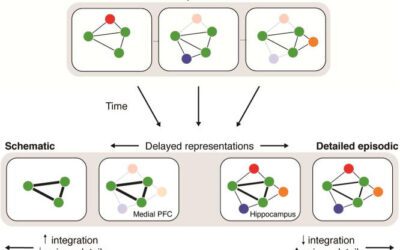

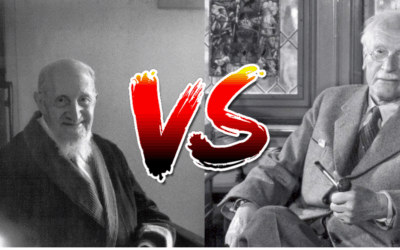

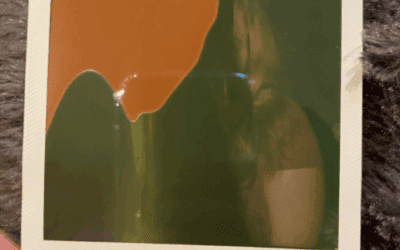




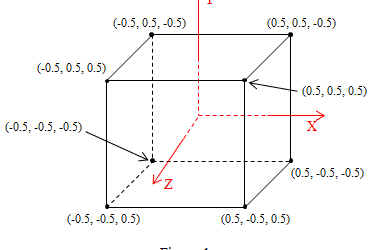


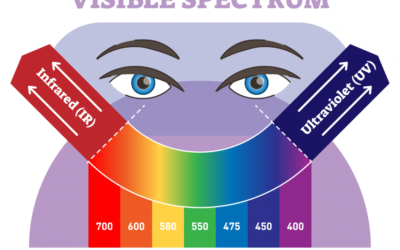


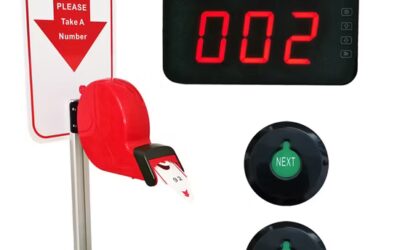

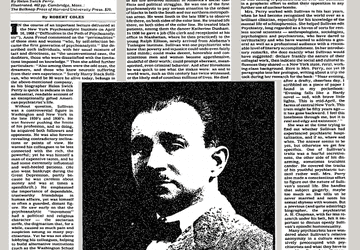

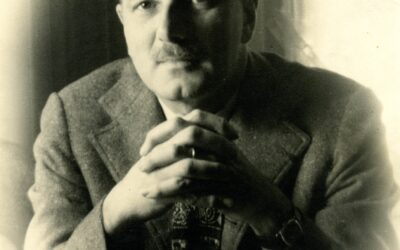



0 Comments